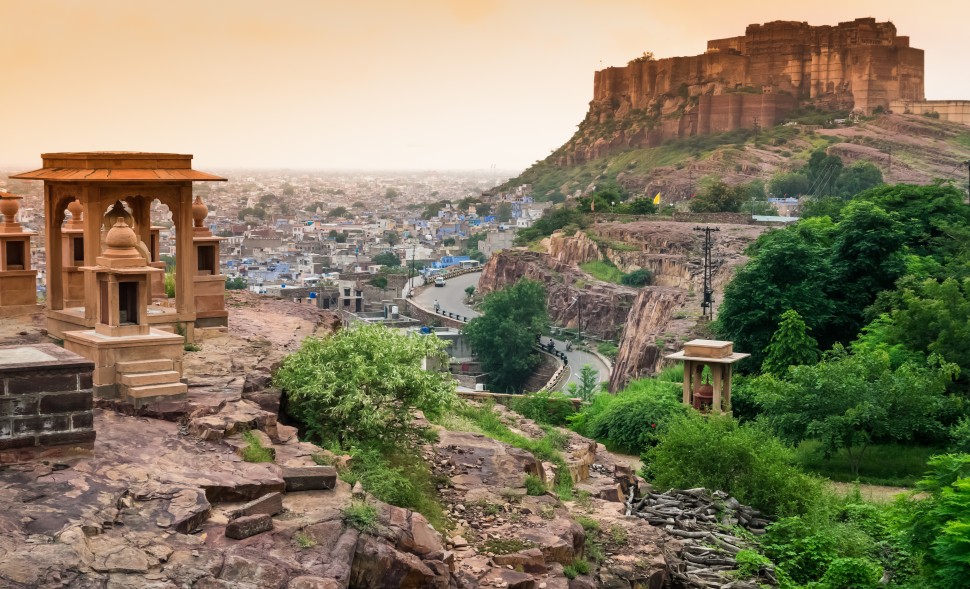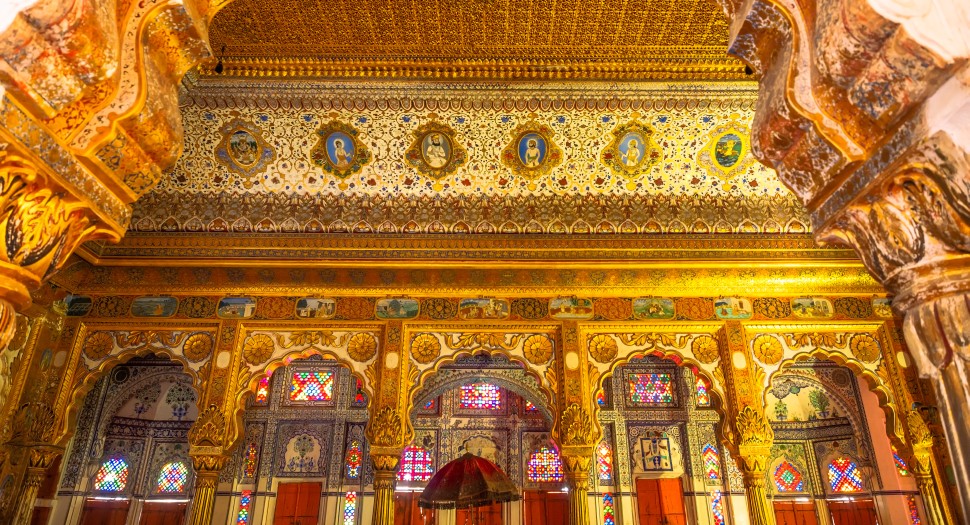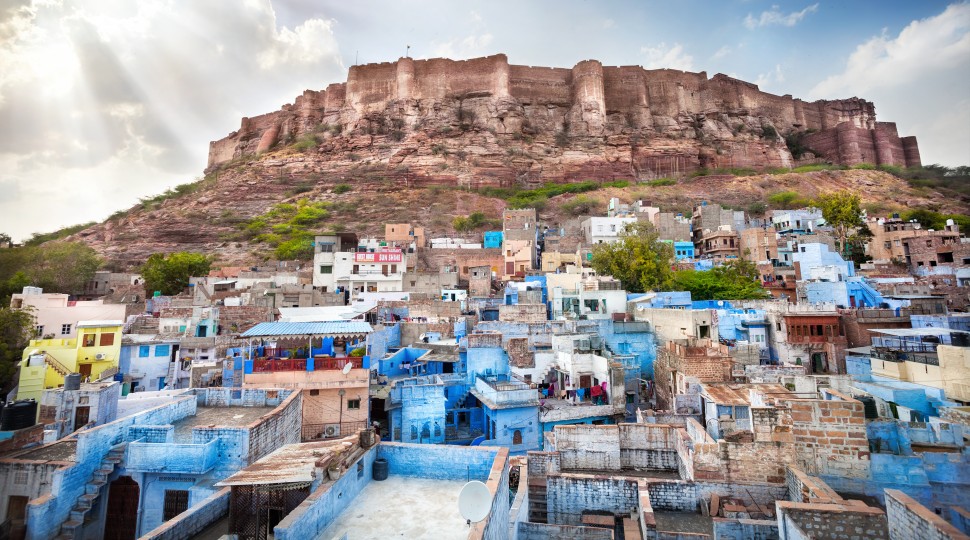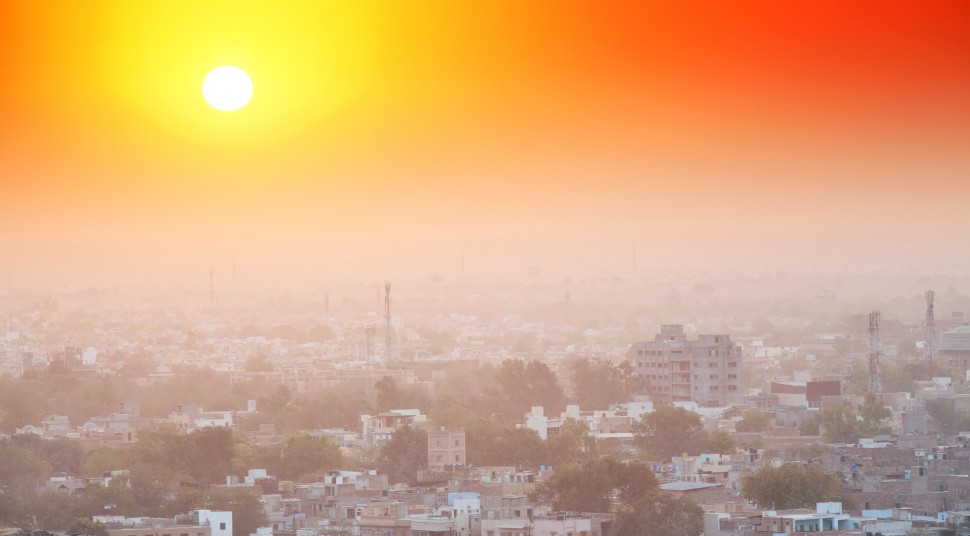Rajasthan Part 1: Jodhpur, the Sun City
I met Stephen in Jodhpur, or 'Sun City', whilst seeking accommodation after a long evening train ride from Pushkar. Tall, brawny and ever-grinning, it was impossible not to like this affable Yorkshireman, with whom I would spend several weeks travelling across the state of Rajasthan. Later we would travel in Laos and the Philippines.
His entourage consisted of a beautiful Swiss couple, a German doctor and a Chinese lady who spoke no English.
I'd successfully latched on. And so we found a guest house offering clean rooms for 150 rupees (£1.50). Our large group soon increased our collective bills however, by ordering numerous Kingfishers on the guest house roof garden, where the lights of ancient Jodhpur sprawled out under the humid night.
In the morning I returned to the rooftop for breakfast, where a hazy blue Indian day was beginning. Squares of rippling linen protected the dining area from the coming sun, and were the reason I hadn't seen the immense Mehrangarh Fort on the previous evening. It was around a mile from the guest house. Its vast sandstone bulk hunkered in the dawn light as hawks and eagles wheeled over its dusty ramparts.

None of my new friends were up and so I decided to visit the fort alone. Billed as one of the largest fortifications in India, Mehrangarh was built in the 1460s by Rao Jodha, the fifteenth Rathore ruler.
The fort rises well over 100m above the city, presenting a clear target; I thought it would be easy to reach. However, the old cobbled alleyways beneath the structure created a labyrinthine barrier that took half an hour to negotiate. As on many previous occasions, I should have consulted a map.
After a tough ascent, I made it to the entrance where I was asked for 500 rupees (locals pay just 60).
Inside Mehrangarh was less foreboding than the seemingly impregnable exterior, and yet it was clearly designed to impress. Internal rooms showed off arms and armour, beautiful costumes, intricate textiles and sublime decorative pieces.
 Inside Mehrangarh Fort, Jodhpur, Rajasthan, India (takepicsforfun/Bigstock.com)
Inside Mehrangarh Fort, Jodhpur, Rajasthan, India (takepicsforfun/Bigstock.com)
Later I strolled the ramparts under the hot sun. I could see why Mehrangarh's walls were near-impossible to breach. How India's 15th Century masons managed to lug these huge stones up here mystified me.
From my lofty position I gazed out over Jodhpur's white and blue houses, which gave way to green and brown scrubland beyond, itself fading into a nebulous horizon.

There are many fascinating tales from Mehrangah, but one of the most haunting relates to the area's propensity to drought every three or four years. It was said that a hermit called Cheeria Nathji, ‘the lord of birds', was displaced when the fort was built by Rao Jodha, prompting the hermit to curse the fort. He said: "May your citadel ever suffer a scarcity of water!" To resolve this, Rao Jodha let the hermit live in Mehrangah, but in addition buried a man called "Raja Ram Meghwal" alive in the foundations. In return, his family would be cared for by Rao Jodha forever. True to his word, Raja Ram Meghwal's descendants still live in Raj Bagh, "Raja Ram Meghwal's" Garden.
Pondering these novel drought solutions, I returned to the guesthouse for an afternoon Kingfisher, where I met Stephen and the group. We ventured out into Jodhpur to find some local delicacies. Naturally, for anyone who enjoys Indian cuisine, a visit to the country of its origination is a treat. But that goes double if you're vegetarian; you can try pretty much any street-side stall or restaurant – safe in the knowledge that the only ‘beef' you'll see is the sacred one nibbling cardboard in the road.
I sampled a range of delicious nibbles, including a huge pepper dipped in some kind of batter. I was slightly put off when the cook burst the item with his thumb in order to create a reservoir for a sweet chilli sauce to be dribbled in – but suffered no ill-effects in the ensuing hours. Besides, we joked, we were accompanied by our German doctor friend, who appeared to have half-a-surgery's worth of medication in her backpack.
Indeed, the doctor's medical supplies would prove extremely useful in the weeks ahead.

Early next morning we rose at five and trudged up to the fort to see the sun rise. Yawning and groggy from the previous evening's socialising, we wondered if the pre-dawn excursion would be worth it. It was. From dark blues to rippling pinks the sky painted itself over a waking Jodhpur, illuminating the spellbinding state of Rajasthan beyond.
Get a Quote